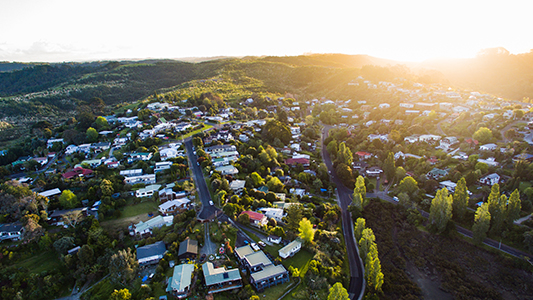INSIGHTS
A SIGN OF THINGS TO COME?
Mark Lister, 21 June 2021
Last week was a volatile one for financial markets. While many of headline indices saw only modest changes, the moves under the hood were significant.
The June Federal Reserve meeting was the big event of the week, and it moved markets big time.
An updated set of economic projections from the US central bank was much more optimistic than we saw back in March. The Fed upgraded growth and inflation forecasts, while bringing forward the timeframe for its first interest rate hike.
It is now pointing to “lift off” in 2023, a year earlier than previous suggestions. Markets are now focused on when the Fed will give notice of its intention to begin paring back its QE programme, which might occur in the coming months if economic data remains buoyant.
All of that sent financial markets into a bit of a spin. The Fed has been making a point of telling anyone who'll listen that the current inflationary pressures won't last, and that slightly higher inflation wouldn’t be a bad thing anyway.
It now seems to have done a bit of an about face. The Fed looks slightly more worried about inflation, and less willing than before to let the economy run hotter than usual.
That small, but important, change in tone saw US inflation expectations fall to a three-month low and 10-year interest rates decline slightly. At the same time, the two-year US Treasury yield jumped to the highest since April 2020.
This flattening of the yield curve (meaning the gap between short and long-term interest rates narrowed) saw US financial and banking shares fall sharply, while other parts of the market that are more economically sensitive were sold off too.
The technology sector benefitted from this dynamic, with investors moving back into some of the higher growth companies that have been somewhat unloved of late.
Interest rates in New Zealand also moved sharply higher last week, after the March quarter GDP report blew past expectations. The five-year swap rate (a key benchmark rate across wholesale markets) increased to levels that hasn’t been sustained since before the pandemic.
The 1.6 per cent quarterly increase in GDP was well above expectations, and in a completely different ballpark to the decline the Reserve Bank was projecting.
The next Reserve Bank meeting takes place in mid-July, and given this strong GDP print the spotlight will firmly be on Governor Adrian Orr.
The Fed’s change in tack gives Orr the opportunity to follow suit, without fear of finding himself out of step with a much larger global counterpart.
Local bank economists are already taking in unison about OCR hikes coming sooner than expected, and anyone with a mortgage renewal coming up (like me) will have noticed that mortgage rates have been drifting higher too.
Australia was also part of the action, with Thursday’s May labour force report smashing market forecasts. A bumper 115,200 new jobs were created, while the unemployment rate fell to 5.1 per cent, the lowest since before the pandemic.
This sets us up for a very interesting Reserve Bank of Australia meeting in a fortnight, with the central bank having already noted that its bond yield target and QE programme will be up for review in July.
It feels like the ground is shifting. The global economy is improving, things are returning to normal, and we don’t need interest rates at quite the same emergency settings as we did before.
The beginning of the “great unwind” isn’t necessarily a bad thing. It will be a gradual process and monetary policy settings will still be quite stimulative for an extended period, particularly compared to history.
We don’t want to be on economic life support forever, and if these changes come on the back of an improving economy, we should find that encouraging.
However, the moves we saw last week could be a sign of things to come, and investors would be wise to prepare themselves for what could be a bumpy transition.




